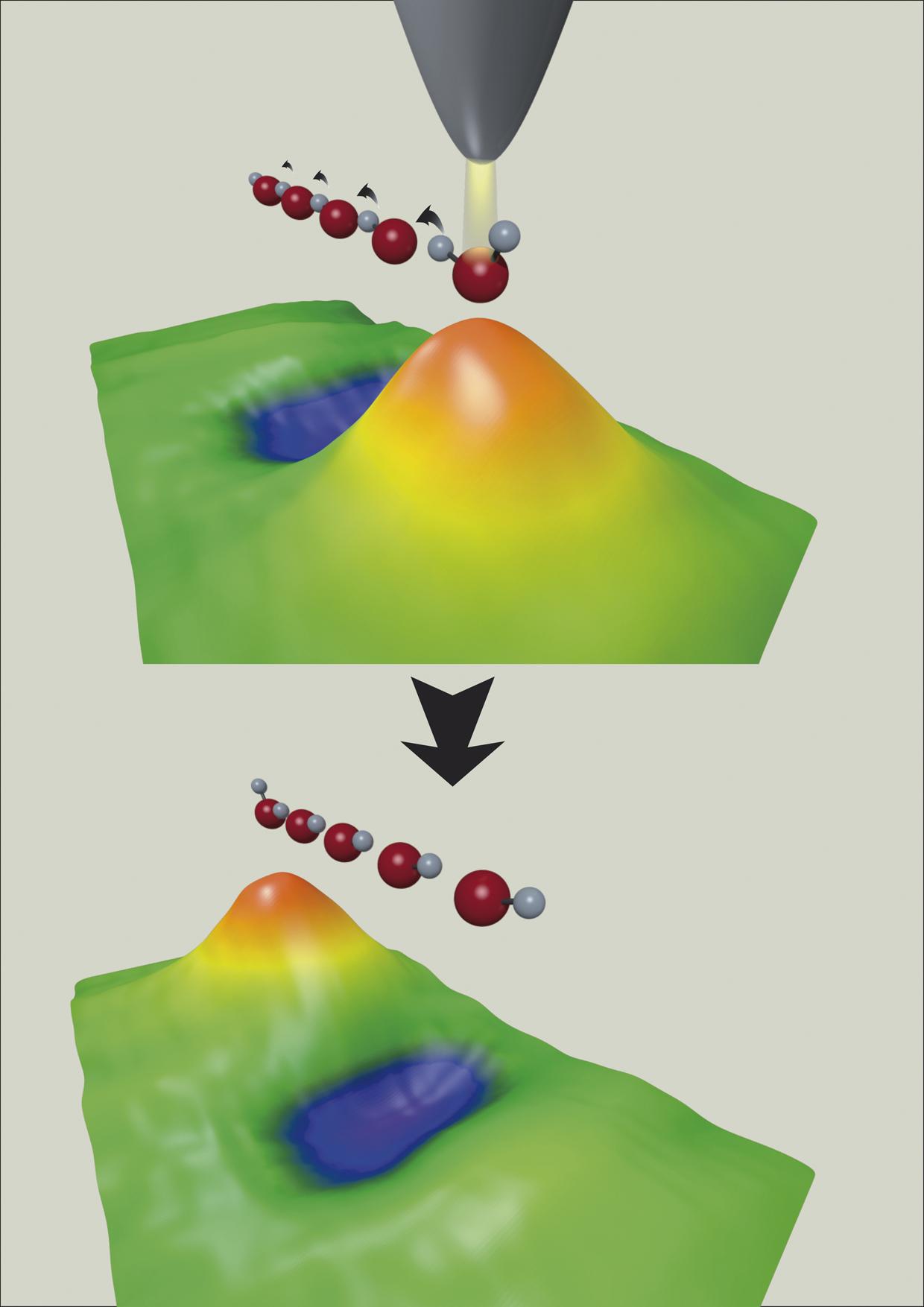Alternating interatomic race: a new way of manipulating matter
2012/02/01 Elhuyar Zientzia Iturria: Elhuyar aldizkaria

Thanks to the collaboration of scientists from San Sebastian and Japan, it has been observed in a real space reacting 'alternately' to hydrogen atoms. This new form of material manipulation can offer a new way to generate information exchanges in future electronics based on new molecular tools. Dr. Thomas Frederiksen is a researcher at the Donostia International Physics Center (DIPC) and a member of the research team. The results of the study were published in the prestigious journal Nature Materials in November 2011.
In a turn-based race, each of the members of each group makes a stretch of road with the witness up to the next member of their team. This way of transporting something from one end to another of a well-defined path is not just invention and human activity. On the scale of atoms, there are also mechanisms to facilitate the transport of hydrogen atoms and protons in networks where hydrogen bridges are linked, such as liquid water, biological systems and functional compounds. However, such transfer procedures are very difficult to see directly in these situations, taking into account the complex means in which they occur.
Japanese and Donostian scientists discover that alternate reactions occur also in molecular chains assembled on a metallic surface. This new step has helped researchers better understand 'alternate' reactions at the scale of atoms and, using the tunnel-effect microscope, have managed to visualize the process. By sending an electron pulse to a water molecule located at the end of a molecular chain, hydrogen atoms are dispersed one by one along the chain as if it were domino pieces. The result is the transfer of the hydrogen atom from one end of the chain to another through this alternative mechanism. This control that has been shown on transfers of atoms through molecular chains has contributed to a better understanding of a fundamental problem and also opens up new possibilities in future electronics based on new molecular instruments so that discovery can induce information exchanges through the circulation of hydrogen atoms.

Gai honi buruzko eduki gehiago
Elhuyarrek garatutako teknologia



